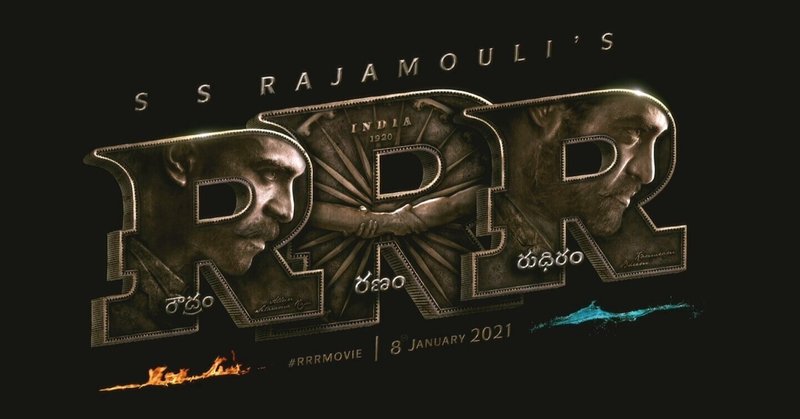
Music (Especially the Score) of RRR: Transcriptions and an Analysis on the Themes & Leitmotifs
The themes & leitmotifs from the film 'RRR' and the use of them are quite impressive and interesting. In this article, I will analyze and explain significant themes & leitmotifs in the film with my transcriptions. I divided the thread into three sections; [1] Character Themes, [2] Conceptual Motifs, [3] Melodies featured in Songs and [4] Reconstruction of the Themes.
Caution: I'm not an native English speaker. There might be mistakes in my poor transcription from the score. The naming and numbering of themes & leitmotifs are tentative, just for analysis purposes. I notated all percussion rhythms/no pitch notes with 'x' note heads on a grand staff, since I was too lazy to create another score. So ignore the pitch. Also, at this point, I haven't read any interview of the composer, M.M. Keeravani. This thread is my personal interpretation of the score.
Keep in mind that in film scores, themes are often reprised in different meters(times). Those transcriptions are just one example and other variations are possible.
Edited on Feb 2nd, 2023:
After knowing that Naatu Naatu is in six-eight(see [2]), It is likely that some other scores I noted in twelve-eight is also actually in six-eight. Don't trust my transcriptions too much.
[1] Character Themes
The character themes form a large part of the score of RRR. Almost all themes are presented early, often even at the instance of the first appearance of each character. I picked up several notable themes among many.
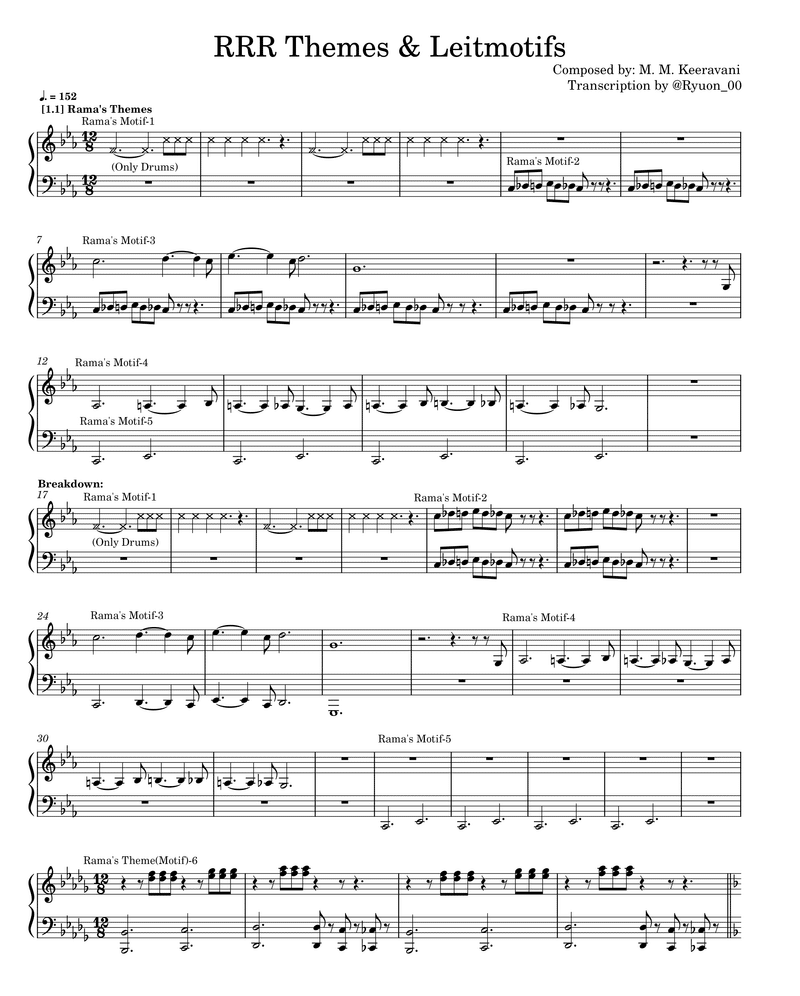
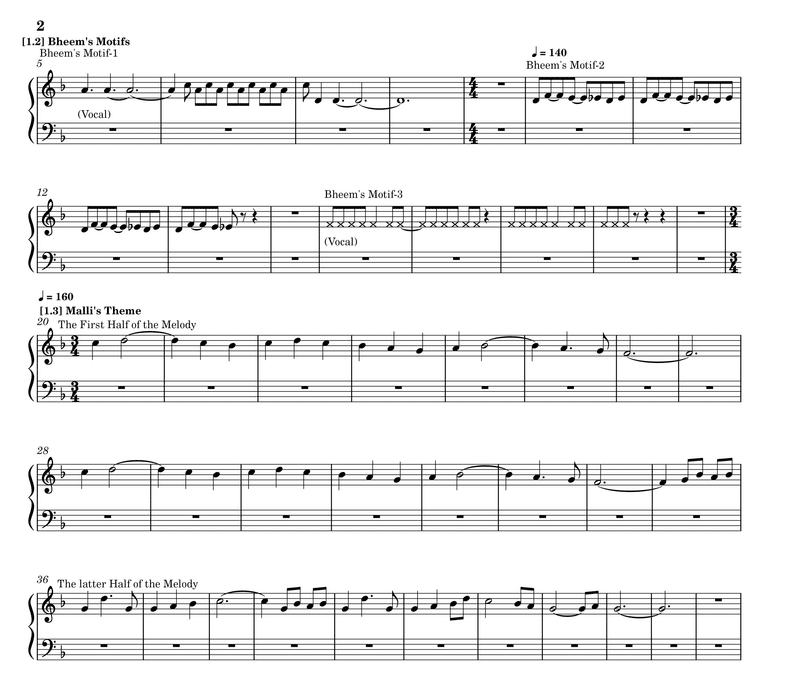
Rama's themes would be the most memorable among others. His themes can be broken down into several motifs, which are not only reprised separately, but also flexibly combined and rearranged to make new theme tracks. The transcription [1.1] shows the combined themes of Rama and the breakdown of them.
All 5 motifs are used in various combinations in different scenes. It's interesting that these themes are so intense that they sound almost imperial. Actually, since the first half of the film doesn't clearly show the reason he became a police officer, you can see him as a steel policeman serving for the British Empire.
In addition to those plenty of motifs, Rama has another theme in the second half of the film (Rama’s Theme(Motif)-6).
This striking theme first plays when young Rama’s prodigious aim is revealed (“Prodigious Precision” in the OST). The theme next appears with the flashback scene, when Seetha reveals to Bheem why Rama became a police officer. Although the theme is presented only twice in full form, it powerfully displays Rama as a soldier fighting for liberation. Also, this theme has an interesting relationship with another theme melody, which will be described in section [4], [4.2] in the transcription.
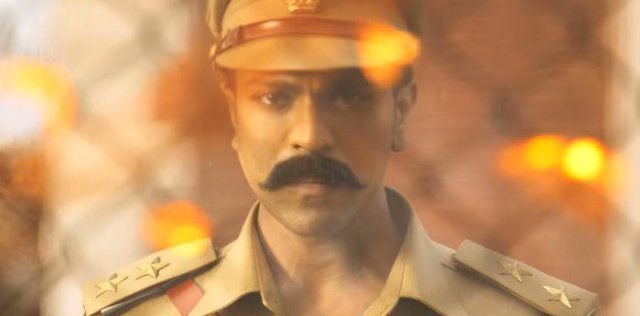
On the other hand, Bheem's motifs are more repetitive and consistent. The transcription [1.2] shows his motifs.
Two of them consisting primarily of human voices, his motifs sound more wild and primitive. Interestingly, all of his motifs have wavelike contours. Bheem's Motif-1 is used to display him as a protector of the Gond, or “a tiger from a forest” as Lachu puts it. Although Bheem's Motif-2 and 3 play many times enough throughout the film, they are often quiet and subtle compared to Rama's themes. (For ex, when Bheem talks with his Muslim family after being beaten up by a British policeman (actually Robert).)
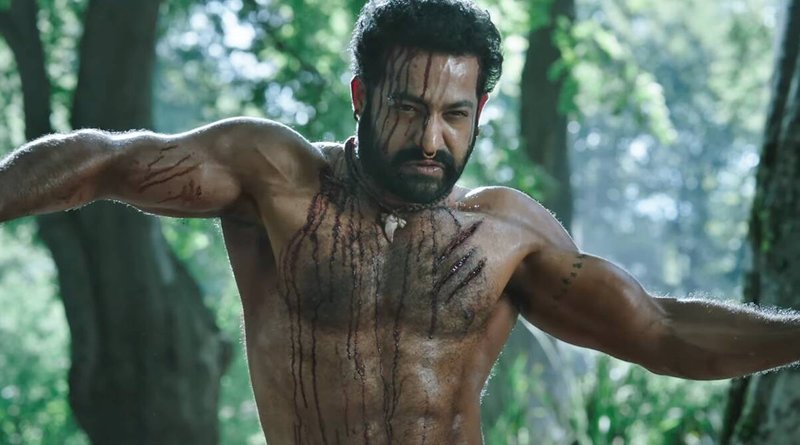
Another notable theme is Malli's (Transcription [1.3]).
Malli's theme is very melodious, emotional and evidently long. It remarkably employs triple time too. The first half of the melody is introduced at the very beginning of the story, sung by Malli. The theme is reprised in the scenes related to Malli, and when it is featured long it also has the latter half of the melody. The melody also plays when Malli finally reunites with her mother. While two main characters' themes remain rather short and often percussive, this one seems to put extra focus on emotion. Given that she is the core of the story of the first half of the film, her theme should be, and is, distinct.
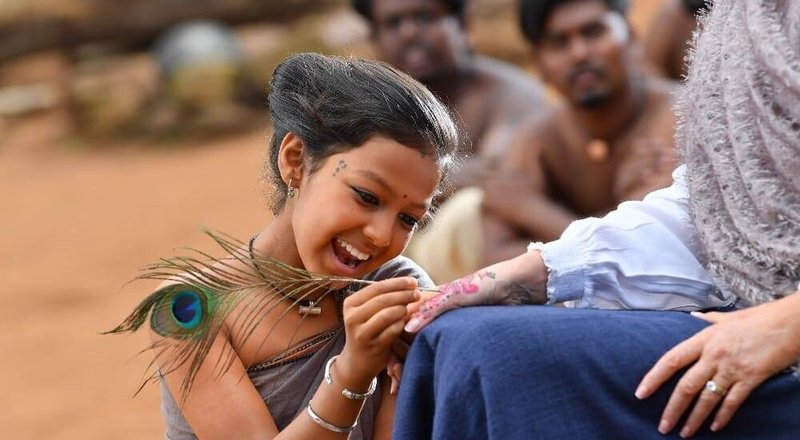
[2] Conceptual Motifs
Alongside the character themes, there are three motifs that represent thematic concepts of the film: Dosti, Spirit of RRR, Urumu(Thunder) motif and “R” motif.
Dosti, first implied in "Train Accident'' and fully presented in the song "Dosti", represents the changing relationship between Bheem and Rama. Although "Dosti" means friendship/bond in Telgu, the theme plays not only when the two characters bond together, but also when their bond breaks down.

I love how the melody is indicated even before the song "Dosti" starts, when Bheem and Rama find each other; it is very effective in displaying their encounter as a destiny. I don't put the full list of when the theme plays, since there are too many and they are obvious. Another point: Dosti contains the rhythm of Naatu (Transcription [2.1]). A very central theme in the film which features memorable rhythms.
Edited on Feb 1st, 2023:
I found out that “The Rhythm of Naatu” in is not correct when played in “Naatu Naatu”.
I illustrated the difference in the notation of “The Rhythm of Naatu” in each song, “Naatu Naatu” and “Dosti” below. You can see that they sound different because the place of beats are different, but if you ignore beats they are the same rhythms.
Edited on Feb 2nd, 2023:
According to an interview of M. M. Keeravani, Naatu Naatu is in six-eight, not twelve-eight. So, you can just mark out “12” and make it “6”, then add a bar line in the middle of each bar. I will correct it maybe when I’m not lazy.
Reference: 'RRR' Wins Golden Globe for Best Song in Triumph for Indian Film Music - Variety
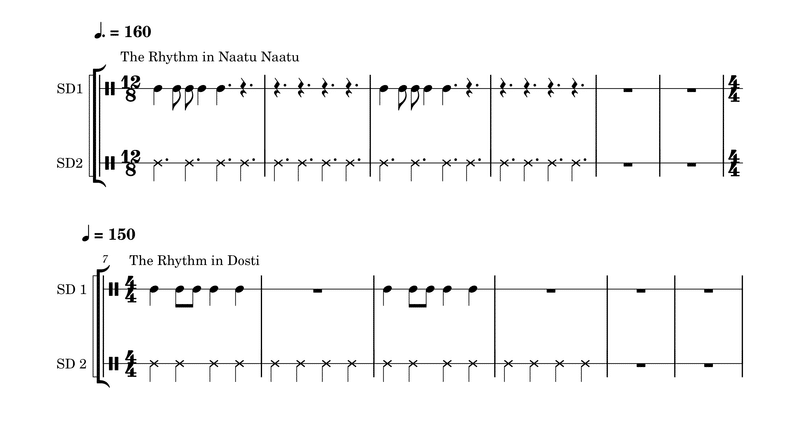
Both of the next two motifs appear only twice in the film.
Spirit of RRR, included in the track of the same name in the OST, is an unique vocal percussion cue that plays at the very beginning of the film. As the title of the track indicates, this cue might just represent the spirit of "Rise Roar Revolt". Although this theme plays only twice in the film, this voice-based track definitely remains in your ear on a first listen. It's pretty cool to hear the theme returning in the second half of the film.
Spirit Of Rrr - song and lyrics by M. M. Keeravani | Spotify
Urumu(Thunder) motif, basically just singing Urumu Urumu Urumu Urumu in simple pitch movement, is another memorable motif with a lot of impact ([2.2]).
The motif is first presented when Rama's father hands Rama a gun for the first time. The second time it plays, when Seetha sends Rama off, the motif develops into a powerful melody and marks the beginning of his journey for a greater cause.
Ram's Oath - song and lyrics by Ramcharan | Spotify
The last one I introduce is “R” motif, which sounds like an echo of a human voice pronouncing “R”. To be honest I don’t remember exactly when they are used, since their appearances are short and they sound more like a sound effect. My impression of the use of the motif is that they are often used to connect sequences seamlessly. They are also one of the recurring images of “RRR” in the film.
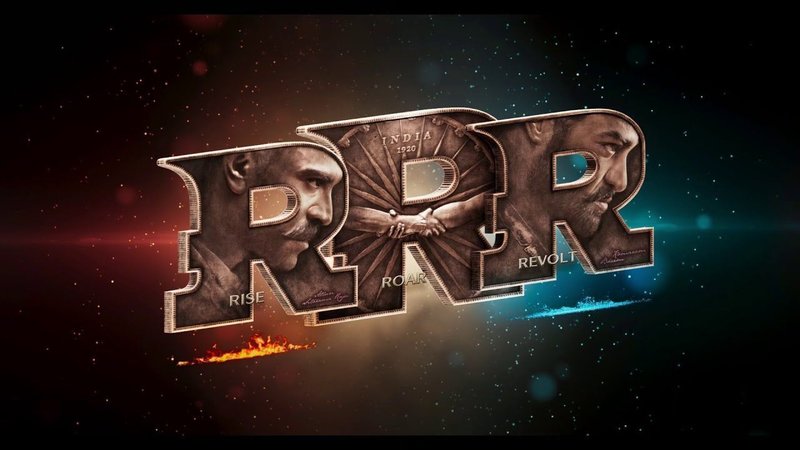
(As you can see, I don’t have much insight into each of those vocal cues. If you have any idea on the use of them, please reply.)
These three powerful motifs, despite their limited appearance, are making the musical palette of the score interesting. Tracks which use human voices as instruments act as a bridge between the songs and the orchestral score. As a result, the music in RRR sounds consistent throughout the film, although it features a variety of songs, musical numbers and orchestral/percussive scores successively.
It's very interesting as a Hollywood film score fan that the Indian film score often features human voice predominantly. These three motifs are a great example of how vocal scores can work in a film.
[3] Melodies featured in Songs
There are some notable melodies that are repeatedly presented in the songs and the score, alongside Dosti.
One impressive example is "Kombe Uyyale". Many of you probably have noticed that the melody in this track, sung by Malli, is the same as the melody of "Komuram Bheemudho". The song is first sung by Malli, then becomes a guide for Bheem to find Malli. Bheem talks to Malli through this melody, and the goddess of the earth(I don't know the correct expression) speaks to Bheem in "Komuram Bheemudho". After the flogging scene, the melody is reprised in orchestral arrangement.
Kombe Uyyale - song and lyrics by Prakruthi Reddy | Spotify
Spotify – Komuram Bheemudho - song and lyrics by Kala Bhairava
Another important song is "Janani". The song is employed in three scenes; when Rama needed to arrest Bheem to become a special officer, when young Rama was required to shoot his father, and when Rama decided to free Bheem. What is common among these scenes is sacrifice; Rama sacrifices his father, Bheem and even himself in the end. This melody also has another appearance at the very end of the film, which I will describe in section [4].
Janani - song and lyrics by M. M. Keeravani | Spotify
[4] Reconstruction of the Themes
Finally the section I want to talk about the most… the reconstruction of the themes in RRR.
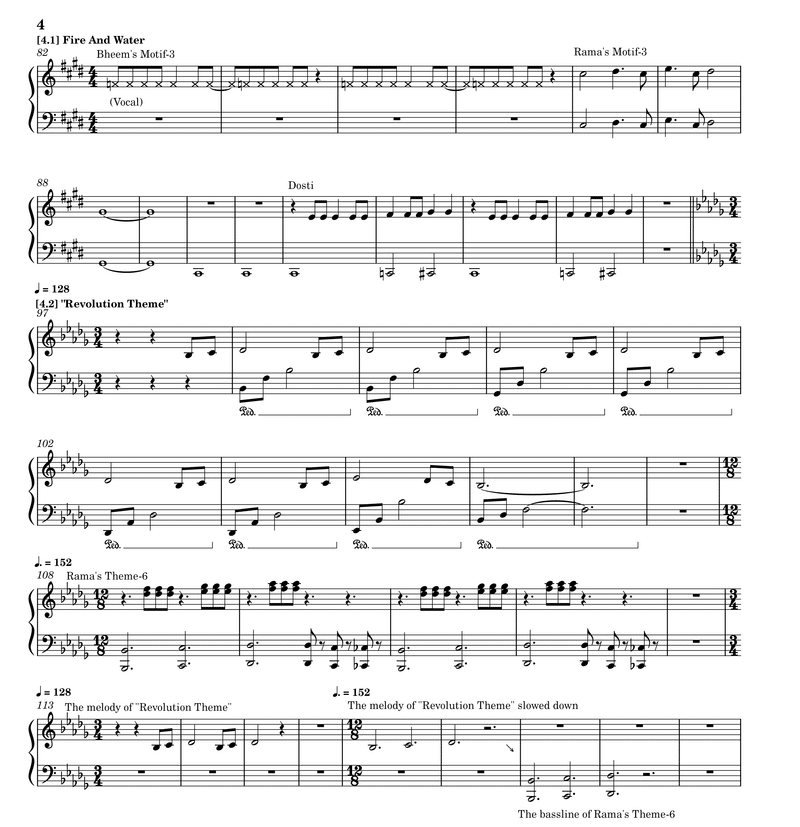
I'm starting with a very obvious one. The track "Fire and Water", as the title indicates, incorporates Bheem's motif-3, Rama's motif-3 and even heartbreaking version of Dosti. With each character’s appearance on screen, these well-introduced themes enhance their characteristics and the clash between them. This scene is the perfect example of a film score translating the scene into music.
Fire And Water - song and lyrics by M. M. Keeravani | Spotify
Next, the melody shown in the transcription [4.2], which I call “Revolution Theme” here, uses the same pitch movement as Rama’s theme(Motif)-6’s bassline.
“Revolution Theme” is introduced in the film before Rama’s theme-6 is introduced, when Rama’s father says to Rama’s uncle that the weapons will come together, in the hands of the village people. Considering the lines of Rama’s father, “Revolution Theme” represents hopes (especially Rama’s father’s) of revolution: the liberation of Indian people. In the OST, “Revolution Theme” is placed after the first introduction of Rama’s Theme(Motif)-6 ("Prodigious Precision"). It is the reverse order compared to the actual order in the film. I don’t know if this order in the OST is intentional, but I personally assume that the melody of “Revolution Theme” developed into Rama’s Theme-6’s bassline (demonstrated in the transcription) (opposite is possible). Either way, Rama’s Theme-6 has a rooted connection with “Revolution Theme”, indicating that he is one of the people fighting for liberation. “Revolution Theme” makes a stunning appearance in “Lord, Aim, Shoot (Climax)”, which I will describe next.
Spotify – Prodigious Precisio - song and lyrics by M. M. Keeravani
The ultimate example of the recomposition of themes can be heard in the climax scene. The cue, titled “Lord, Aim, Shoot (Climax)”, brings back Rama’s motif-5, “Janani” and “Revolution Theme”. The transcription [4.3] shows the transcription and the breakdown of the track.
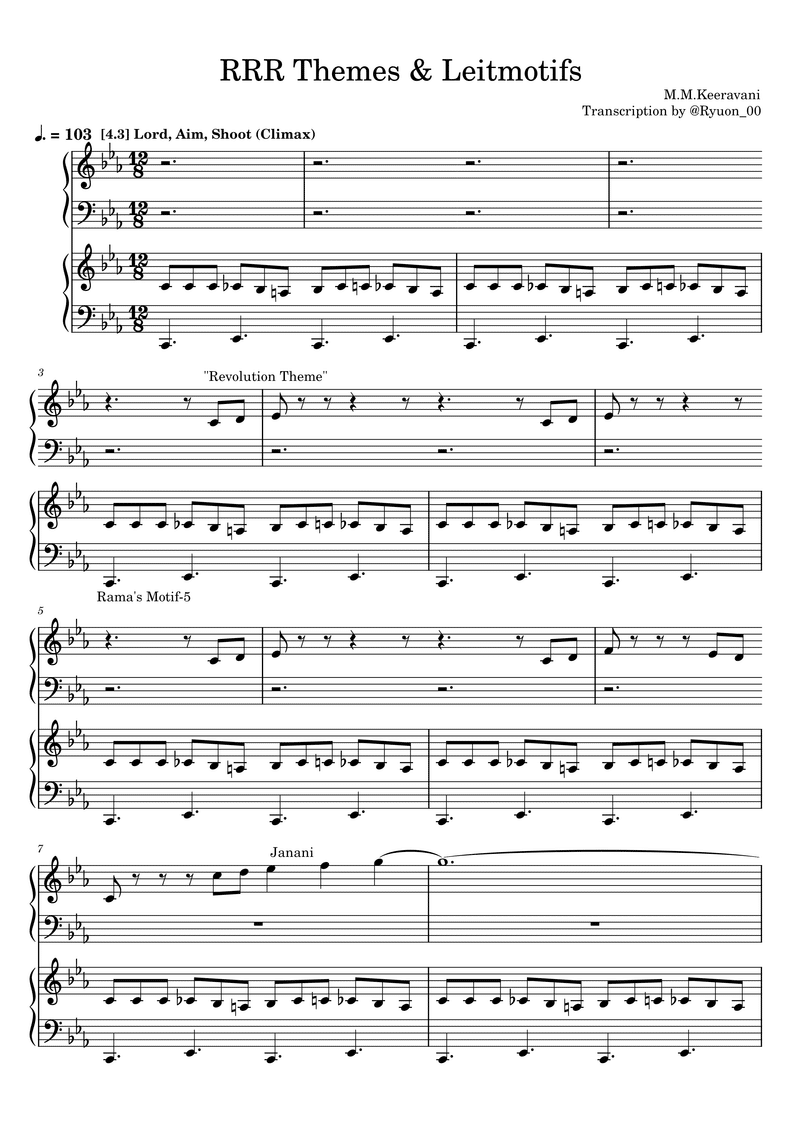
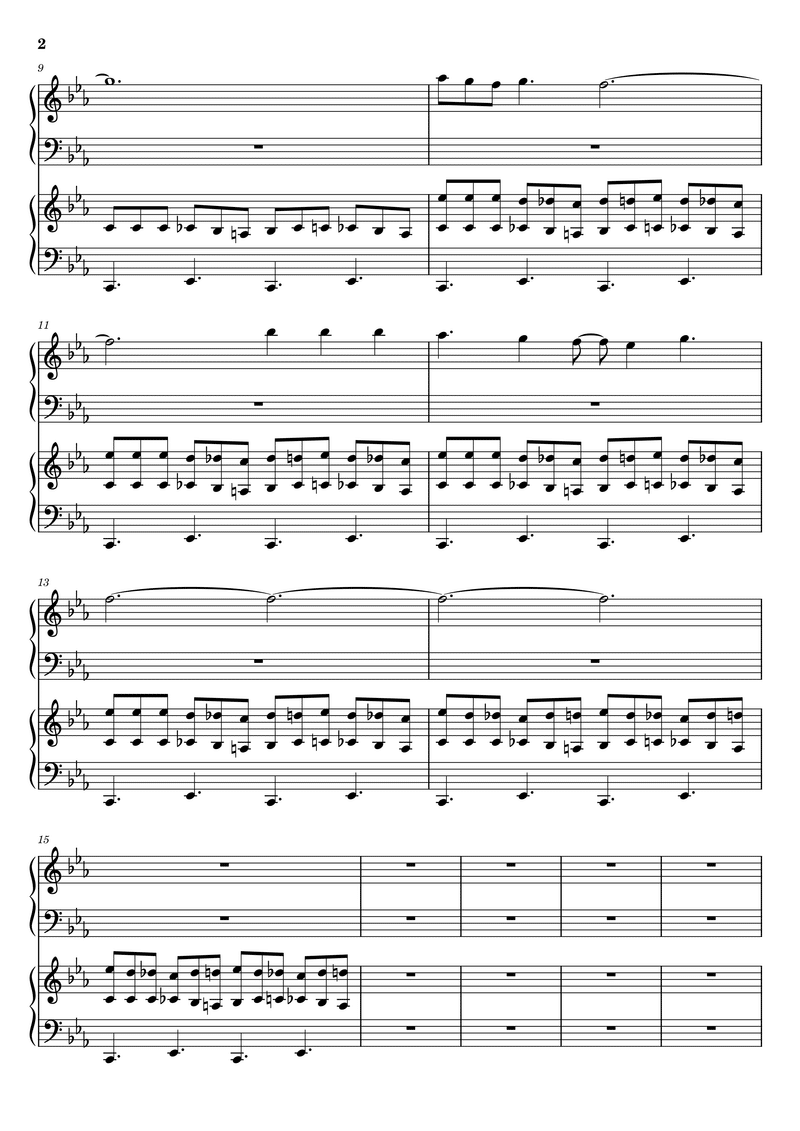
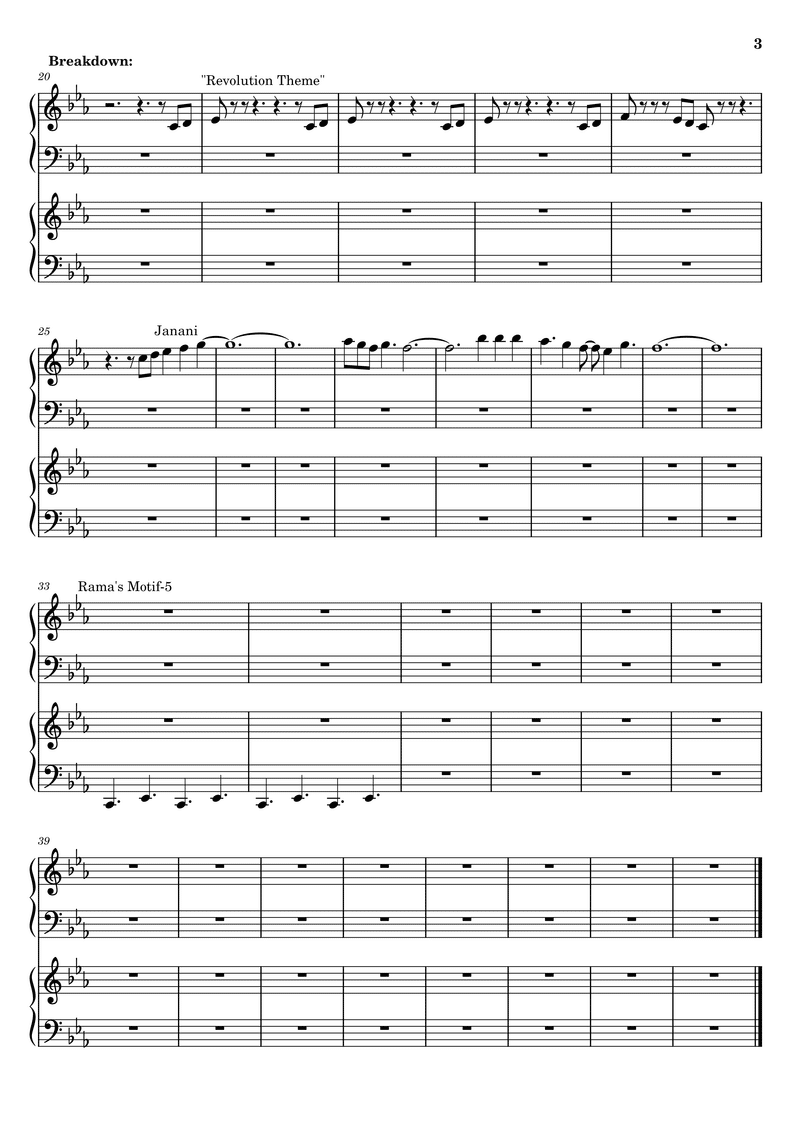
(Ok, what I found transcribing the score is that it seems the bars of “Revolution Theme” are displaced from the original place of bars of the other parts. I don’t exactly know what is happening here or if my transcription is correct. I’m continuing my presentation anyway.) “Revolution Theme” dominantly appears with bold, triumphant arrangement. “Janani”, a bit rearranged, enters in the background smoothly but clearly. The up-tempo version of Rama’s motif-5 stays throughout the track, functioning as the bass.
Spotify – Load, Aim, Shoot (Climax) - song and lyrics by M. M. Keeravani
Rama’s effort in the police, the sacrifices he made and his father’s will reach a kind of an ending here. Although Rama and Bheem’s fight for freedom would continue, wow, what a perfect score for the climax scene! It’s not just a refrain of a previous theme, but the reconstruction of the themes introduced throughout the film. Beside that, the track in itself is capable of raising tensions in the scene with an intense orchestral arrangement. I would give this cue 100 stars out of 5 for its function as a film score; creating the atmosphere of the scene, emotionally appealing to the audience and telling the story behind the scene which is not verbally or visually told.
Conclusion
In summary, The music of RRR is a well-conceived collection of extraordinary themes & motifs with striking impacts. Much respect to the composer, M. M. Keeravani!
I watched RRR in the theaters six times and listened to the OST. Hopefully I can check where those themes are used again when DVDs are out.
I had so much fun finding & analyzing the themes while watching the film.
Please feel free to comment if I’m missing something or you have any other ideas.
Also, any info about the instruments used in the score is welcomed.
You can correct my English writing too.
Thank you for reading this long article!
この記事が気に入ったらサポートをしてみませんか?
